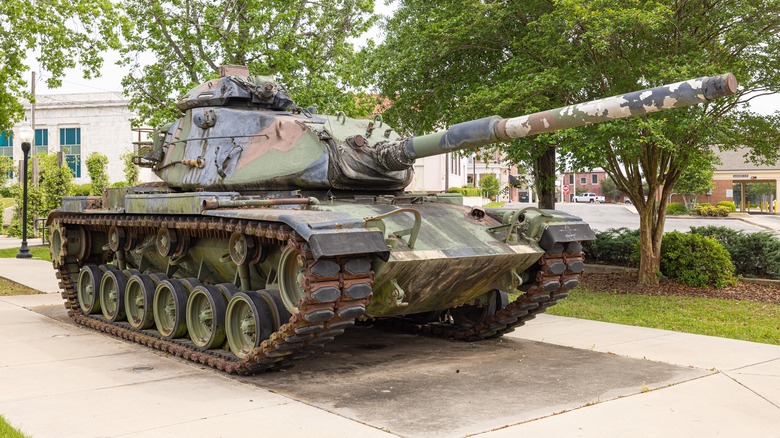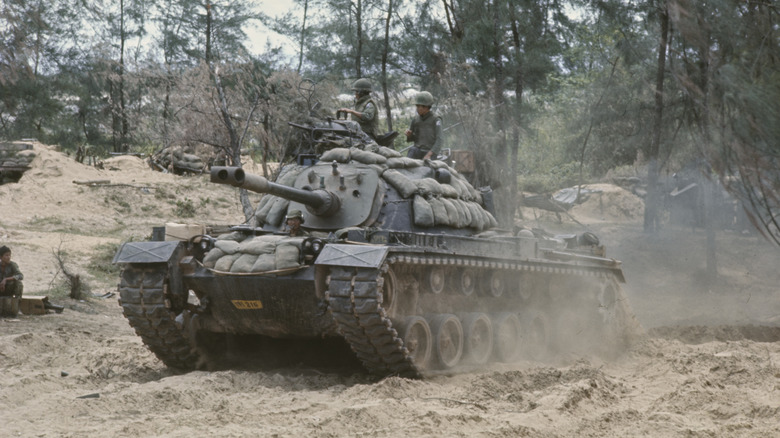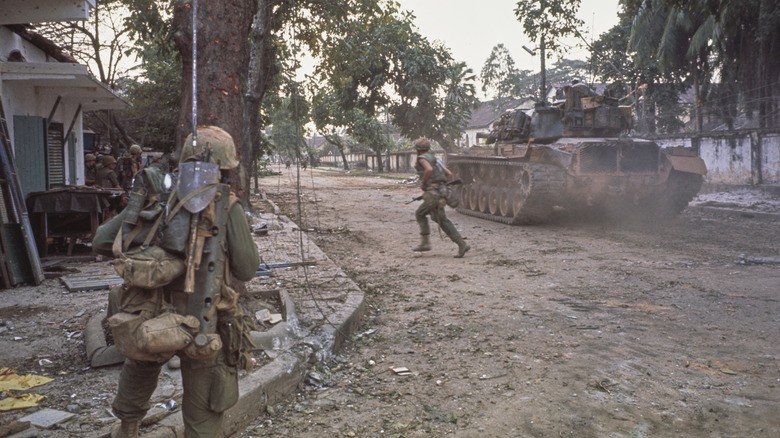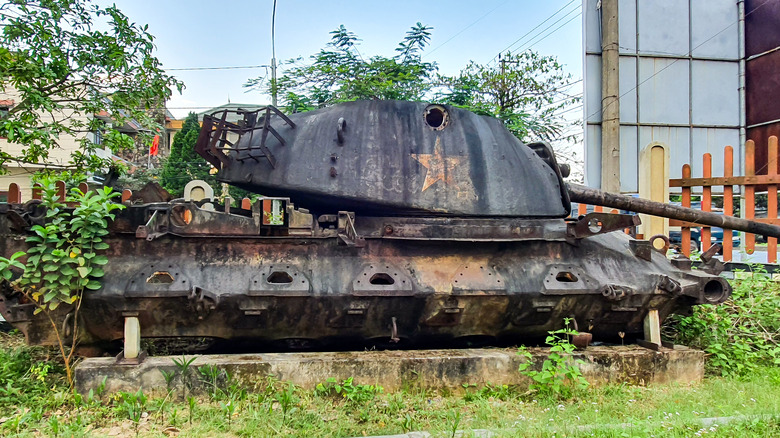How The M48 Tank Was Deployed In The Vietnam War
The military might of the United States has been decisive for the nation and its allies in several conflicts. In World War II, for instance, the support of the Lend-Lease program bolstered Allied supplies of weapons, tanks, and other essentials before the nation joined the fighting directly.
The Vietnam War, which began in 1954, saw American tanks again take to the field in support of an ally: the South Vietnam government in this case. U.S. involvement in the conflict began indirectly, with the introduction of military advisors, which continued apace until the next decade and escalated to the first American troops arriving in March of 1965 at Da Nang.
Their arrival was an enormous military boon to the forces of South Vietnam, whose allies in the field were armed with formidable equipment like the M48 Patton tank. The Patton, in particular, however, faced a very different type of warfare here. Here's how the tank was used during the Vietnam War and how it was taken to the mainland in the first place.
The M48's arrival with the American forces
At the end of February 1965, Major Charles M. Johnson, U.S. Marine Corps, and Jack Shulimson noted in "U.S. Marines In Vietnam: The Landing and the Buildup 1965," it had become apparent that United States troops' dispatch to Vietnam was all but inevitable. Their South Vietnamese allies expressed a hope that this could be done surreptitiously, as far as possible, and the Assistant Secretary of Defense reportedly determined that "it was desirable to deploy the Army's 173d Airborne Brigade by air from Okinawa instead of the 9th Marine Expeditionary Brigade (MEB)."
This was overruled, and the MEB, numbering 4,685, landed in March 1965. Logistically, some of the heavy gear had to arrive later, as did that of some of the troops that followed. Shulimson and Major Johnson wrote, "VMFA-531 would fly its aircraft to Da Nang, while its heavy support equipment would follow in amphibious shipping." The next month, U.S.S. Snohomish County, a tank landing ship built during World War II and which also served its role in the Korean War, was one vessel employed in delivering "heavy equipment" to the marines.
That same March, the M48A3s of the Marine Corps 3d Tank Battalion landed, the first to arrive in Vietnam. Considering that an M48 weighs approximately 49.5 tons and taking into consideration the logistics of the journey and the terrain, an amphibious landing utilizing a hefty vessel with a convenient ramp was the logical way to deliver M48s to Vietnam.
The M48 was a powerful weapon in the Vietnam War
Defensively and offensively, tanks can be formidable forces on the battlefield. In Vietnam, however, the American M48s faced challenging, wooded terrain — vehicles over nine meters long and 3.6 meters wide tend to appreciate room to maneuver — and the guerilla tactics of the Viet Cong. As such, it was often impractical to bring this heavy equipment to bear in frontal assaults. As retired U.S.M.C. Captain Dale Dye wrote in The Armory Life, "Pre-deployment training ... emphasized guerilla warfare, avoiding booby traps, and winkling out Viet Cong guerillas in dense jungles. What good would big tanks and other armored vehicles be in that kind of fight?"
This isn't to say, though, that the tanks weren't a vital tool during the conflict. They offered, as ever, a heavily armed and armored platform from which to assault enemy positions. Though Dye concedes that Vietnam was "an RPG-rich environment," making the threat the enemy posed to tankers all too plain, M48A3s were armed with anti-personnel and anti-tank rounds alike, blasted from a formidable 90mm gun. In this capacity, the tanks supported the infantry in a conventional sense in attacks such as Operation Allen Brook.
The M48 was a powerful weapon but also much more than that.
Other duties the M48 performed in Vietnam
Given the difficulties of the terrain of Vietnam and the opponents' expert use of it to press their advantage and mitigate those of the American forces, the U.S. had to be creative with its resources, too. A tank like the M48 may have a mighty cannon, but it's much more than just a gun on wheels.
To make transport around the country easier, M48s could have 'diggers' affixed to the front. In this way, they could gouge improvised paths through the trickier areas. In unfamiliar and hazard-laden woodland, clearing space and securing paths in this way is vital, and it's a role that would be infinitely more difficult and time-consuming for infantry alone. At the same time, traversing those paths would have made those ground forces even more vulnerable without tank support, so the supportive role was the focus of the M48s in Vietnam.
The M48s were, perhaps, unable to utilize their heavy weapons to the best advantage in Vietnam. This is partly due to the support for the opponents' cause in the country, which, The New York Times argued, meant that the "American and South Vietnamese could only grope after the elusive enemy and were rarely able to fight him except on his own terms."
It did have a role in offensives, though, and enabled the success the U.S. achieved by protecting, supporting, and clearing a path for the Marines. A venerable and versatile tank indeed.



